If you buy through our links, we may earn an affiliate commission. This supports our mission to get more people active and outside.Learn about Outside Online's affiliate link policy
Race In This? Train In That: Triathlete’s Guide To Similar Supershoes And Trainers
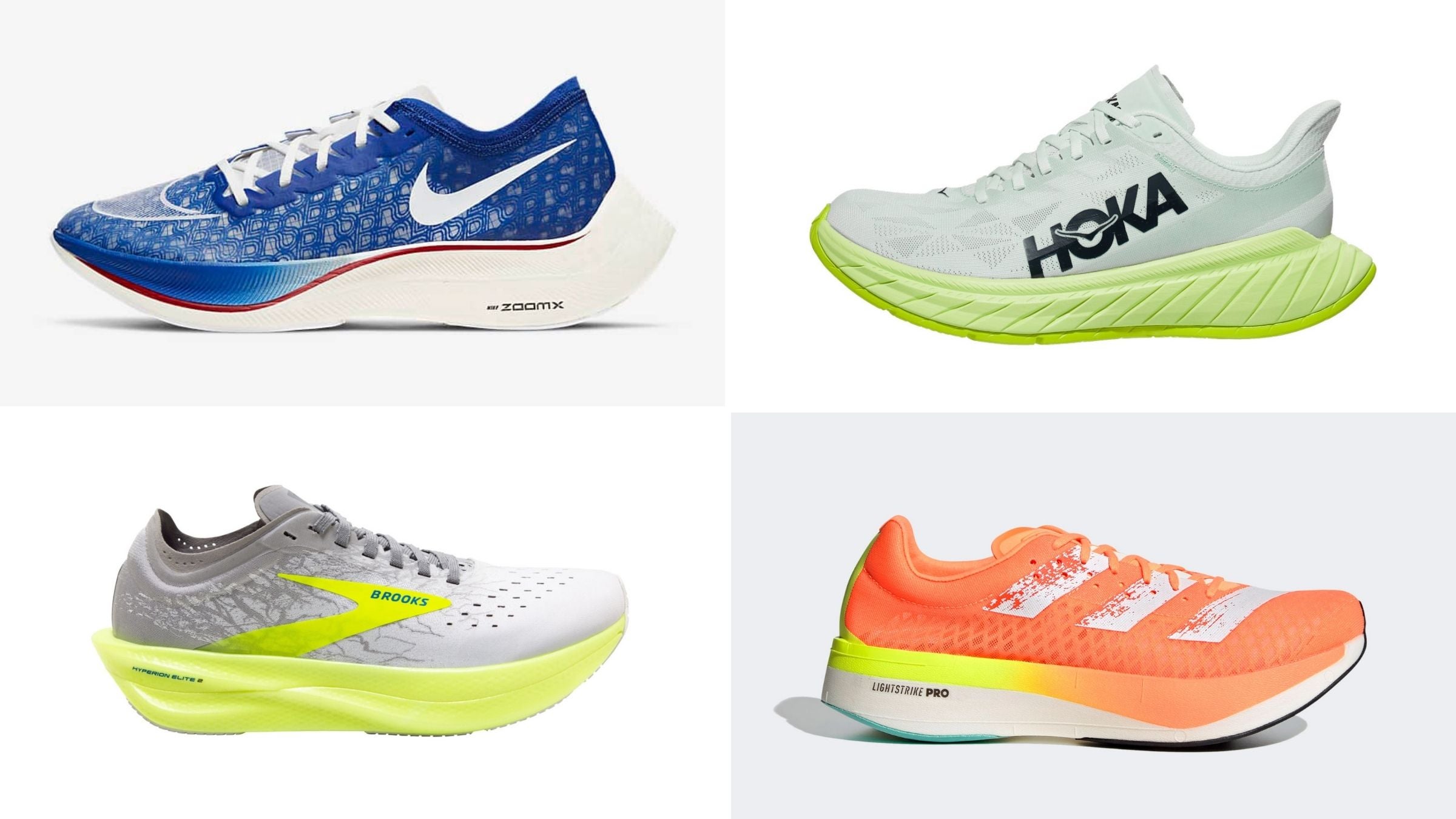
Table of Contents
The past two years have seen a huge surge in supershoes and other hyper-modern race shoes. Today, the term “race flat” almost doesn’t even make sense to the race-day shoe category. But just like race flats, you shouldn’t do the majority of your training in supershoes—not only can they wear out quickly, but they don’t always provide the support, cushioning, and structure you need for all speeds and all distances.
But if you have your heart set on a pair of speedy race-day kicks, we’ve put together a guide to help you pick a pair of trainers that will complement or supplement those brand-new supershoes. Similarly, if you’re in the market for a pair of racers or lightweight trainers that will sustain you on race day, scan the guide below to see if your trainers are on the list, then connect the dots from there to find your optimal race-day kicks. Think of this guide as your personal race-day/trainer concierge service.
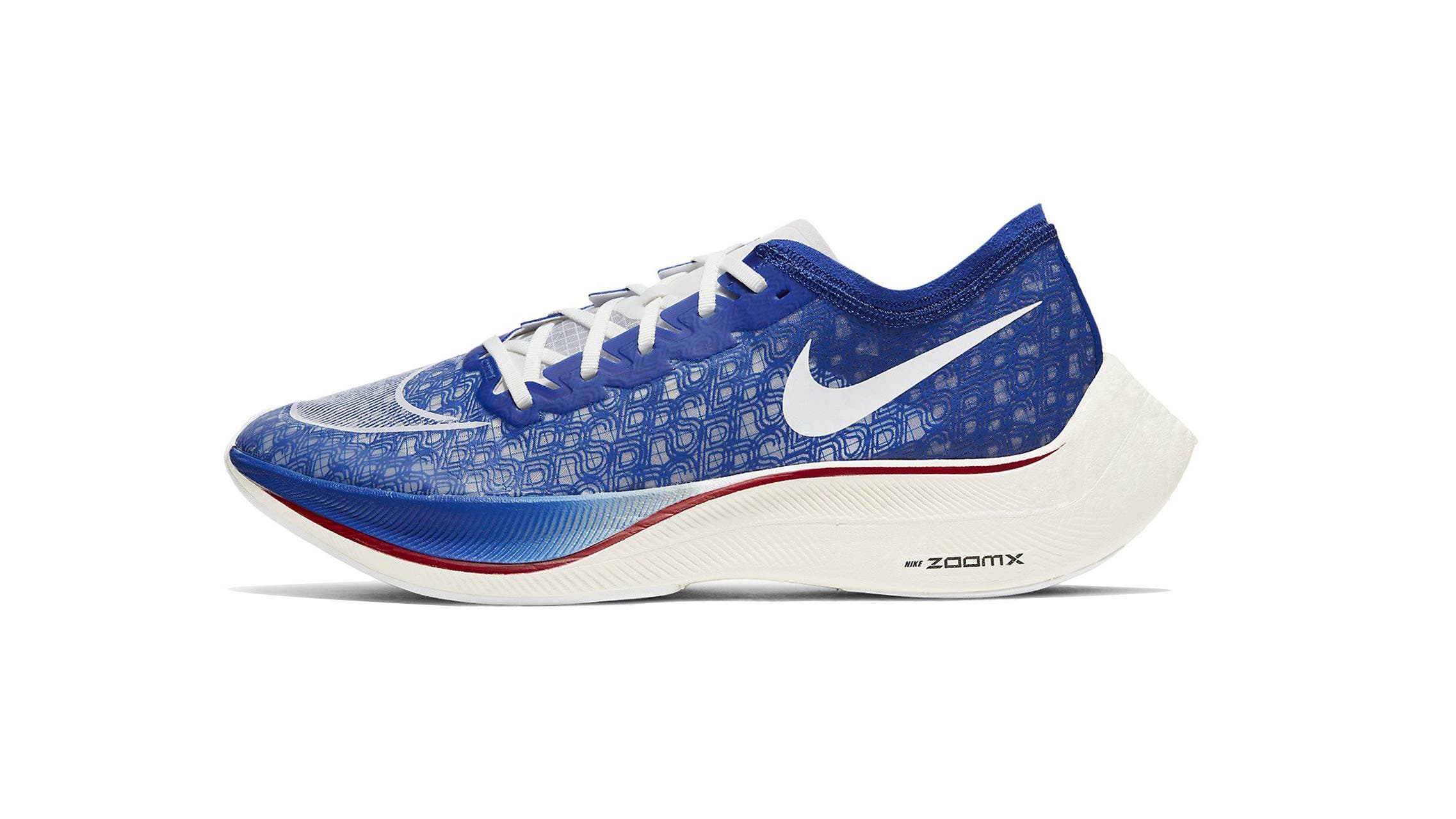
You race in the: Nike ZoomX Vaporfly Next%
($250, 8mm offset, 6.6 oz), nike.com
You probably know the Vaporfly Next% because it has been at the sharp end, driving the supershoe revolution that has led to so many world records and PBs. It uses ZoomX foam for outstanding energy return and the engineered woven upper mesh is both secure and breathable. With its full-length carbon plate and 15% more foam than the original version, this shoe will help you comfortably fly through any distance from a 5K to a marathon. It is best suited for forefoot runners who can power through the gait cycle at a high cadence, as the Next% is not well suited for heel striking, and the shoes lose their comfort and efficiency at slower paces (think long-course shuffling and marathons above four to five hours.
Race in those? You should train in: Nike’s Air Zoom Pegasus 37
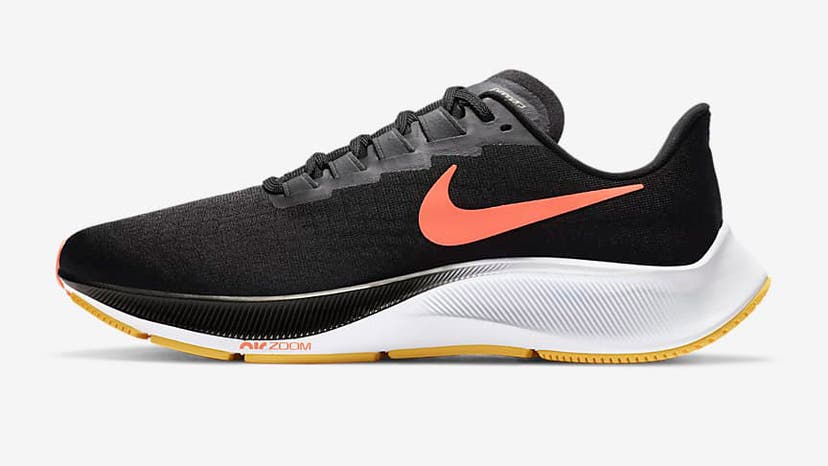
($125, 10mm offset, 9.7 oz M, 7.8 oz W), nike.com
This shoe has a similar secure fit and although it’s much more flexible—sans carbon plate—the React cushioning and the enlarged forefoot Air unit will keep you rolling through many a road kilometer.
OR
Race in those? You should train in: Asics’ METARACER
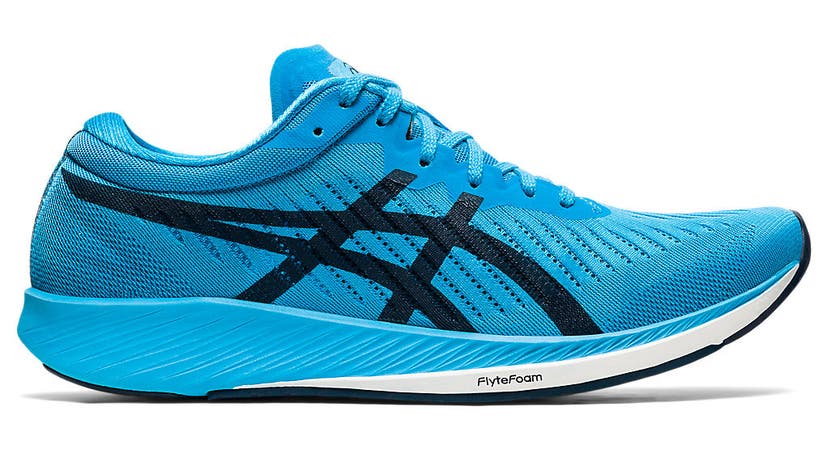
($200, 9mm offset, 6.6 oz.), asics.com
If you want to try a shoe with some of the Next%’s high-turnover accommodating qualities, the METARACER has a lot of the uptempo characteristics, but it is closer to being an old-school racing flat as its lower profile and Asics’ GUIDESOLE technology and carbon fiber plate in the midsole provide a less dramatic roll-through transition. For more on the Asics family of supershoes, check out our members-only face off between “team Asics” and “team Saucony.”
OR
Race in those? You should train in: HOKA’s Rocket X
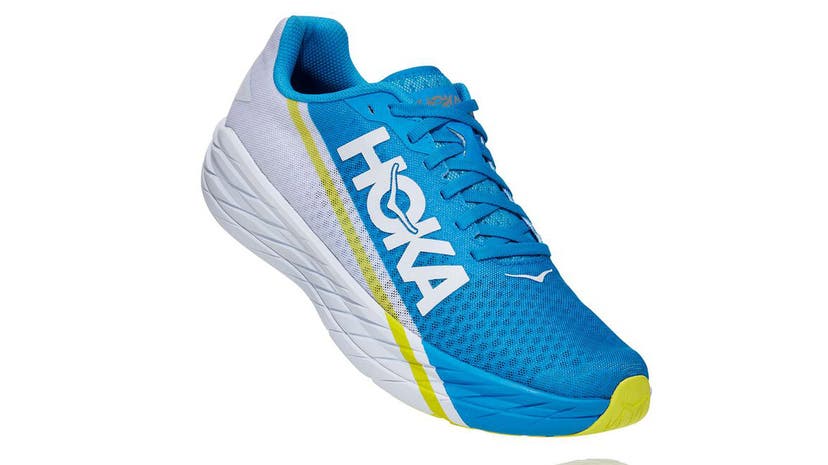
($180, 5mm offset, 7.4 oz.), hokaoneone.com
These shoes, on the other hand, are “tuned” even higher than the Next% to really get you on your toes. It uses a straighter carbon plate, so it feels like it lifts you onto your toes more than it rolls you off, producing a powerful lever to propel you forward. Be forewarned: This pair requires a very strong stride.
Interested in taking your race day to a higher level? You may want to race in the Nike Air Zoom Alphafly NEXT%.
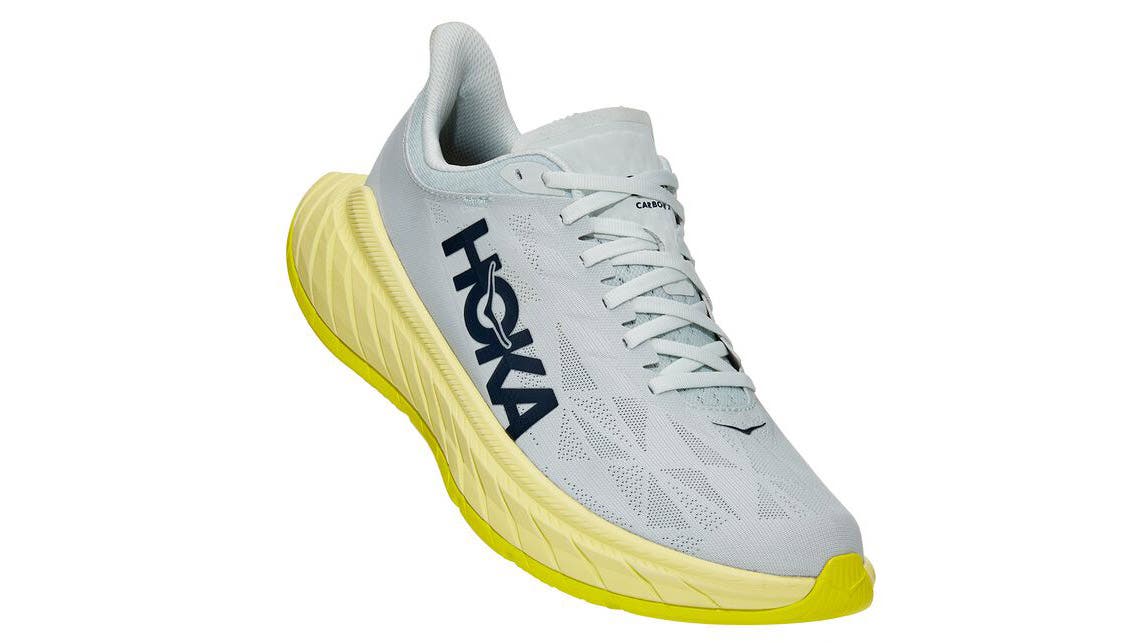
You race in the: HOKA Carbon X 2
($180, 5mm offset, 8.4oz M, 7.0oz W), hokaoneone.com
Jim Walmsley wore the Carbon X 2 on his feet when he missed the 100k world record by a mere 12 seconds. They were designed with that effort in mind—to transect sustainable speed and comfortable performance. HOKA tinkered with the original Carbon X, incorporating a lighter, softer foam midsole and smoothing the gait cycle with a wider forefoot and slightly modified rocker.
The engineered mesh upper is also more supple and breathable. More of an ideal iron-distance racing shoe, the Carbon X 2 boasts the performance benefits of a super shoe when one might not have the biomechanics or strength required by many of the mostly-stiff super shoe models that demand runners to be up on their toes before they reap the shoes’ “superness.” Even in contrast to HOKA’s Rocket X, the Carbon X 2 performs better for mid- and rear-foot strikers and, accordingly, is the better choice for lower-cadence runners.
Race in those? You should train in: Puma’s Deviate Nitro
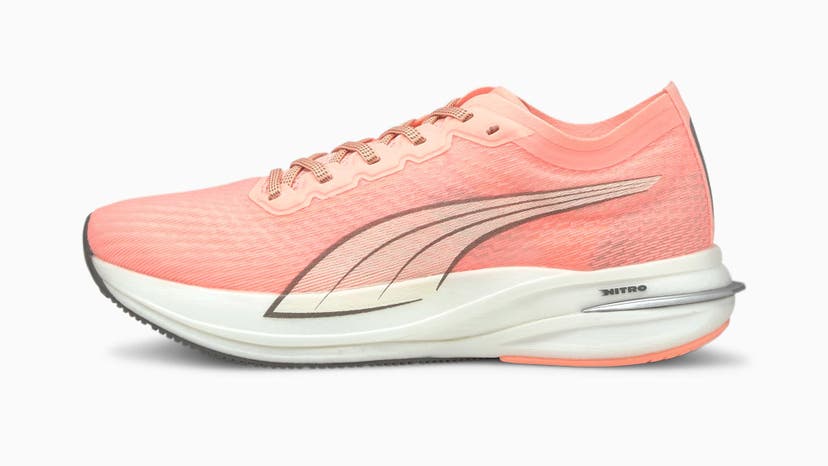
($160, 8mm offset, 9.4oz M, 7.6oz W), puma.com
Representing Puma’s return to the performance running game, the Deviate Nitro is an interesting application of supershoe technologies—in this case a carbon plate with gas-infused foam for lightweight cushioning and high mileage. The composite carbon fiber plate serves as a lever to propel the foot forward and increase efficiency by using the best propulsion aspects of Puma’s well-loved track spikes.
OR
Race in those? You should train in: Saucony’s Endorphin Speed
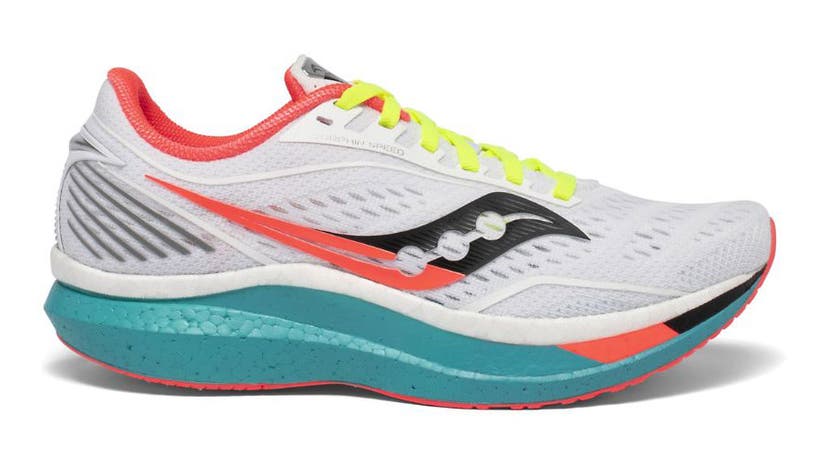
($160, 8mm offset, 7.8 oz), saucony.com
If you want a more relaxed, semi-flexible nylon plated shoe, this shoe features the same midsole foam as the Endorphin Pro—the inscrutably named PWRRUN PB—but is more of a performance trainer with a slightly less curvy plate that lacks the snap of the Pro for a soft, smooth, and slightly bouncy ride. This is a shoe that is versatile enough for effective running at faster paces for tempo workouts, fartleks, and intervals as well as moderate paces for long runs. For more on the Saucony family of supershoes, check out our members-only face off between “team Saucony” and “team Asics”.
Interested in taking your race day to a higher level? You may want to race in HOKA’s Rocket X ($180, 5mm offset, 7.4 oz).
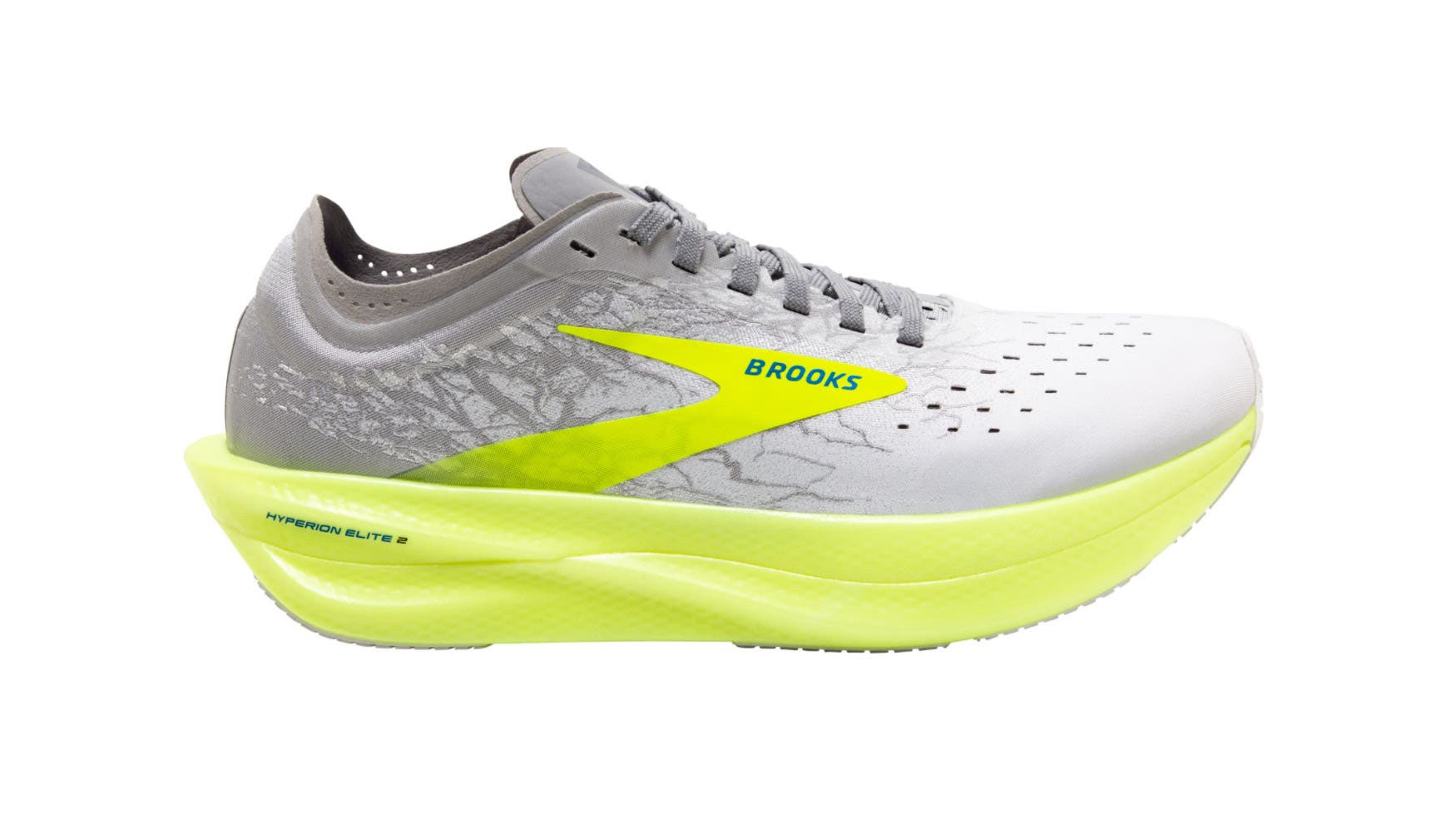
You race in the: Brooks Hyperion Elite 2
($250, 8mm offset, 7.6 oz), brooksrunning.com
Brooks’ second version of the carbon-fiber-plated Hyperion has a more durable nitrogen-infused foam and shape to give a noticeably springier feel. The midsole cushioning dampens impact forces and smooths the ride without excessive squishing or bouncing, and its moderate, unobtrusive rocker speeds stride cadence along without rearranging it. For a super shoe, the Hyperion Elite 2 manages to feel somewhat “normal” even though it often leads its users to run 10–15 seconds per mile faster with what seems like a similar effort.
Race in those? You should train in: Brooks’ Hyperion Tempo
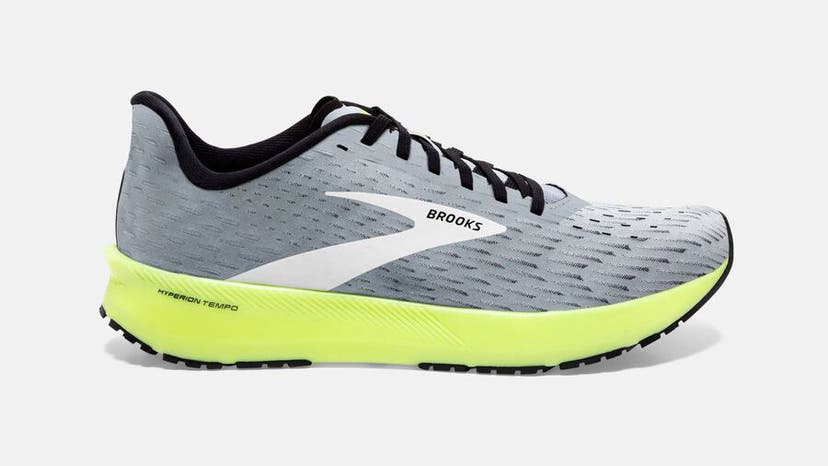
($150, 8mm offset, 7.2oz M, 6.7oz W), brooksrunning.com
This shoe uses the same nitrogen-infused midsole foam for a smooth, energy-returning, and comfortable ride. The Tempo feels great when accelerating and holds up well over long miles while still shining without a carbon plate or a massive stack of cushioning. Think: versatile, lightweight trainer that is well suited for tempos, speedwork, and road races.
OR
Race in those? You should train in: Skechers GOrun Razor + Hyper
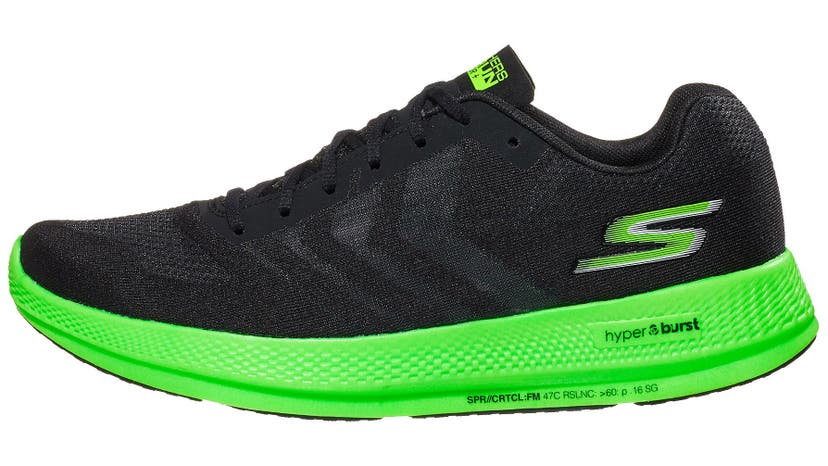
($135, 4mm offset, 6.4oz M, 4.9oz W), skechers.com
The GOrun Razor + Hyper is a lot like the Brooks Hyperion Tempo—looks included—but lighter, softer and more flexible. The upper is incredibly pliable, and the midsole serves up plenty of toe spring as one would hope from such a lightweight go-fast shoe.
OR
Race in those? You should train in: Saucony’s Endorphin Pro
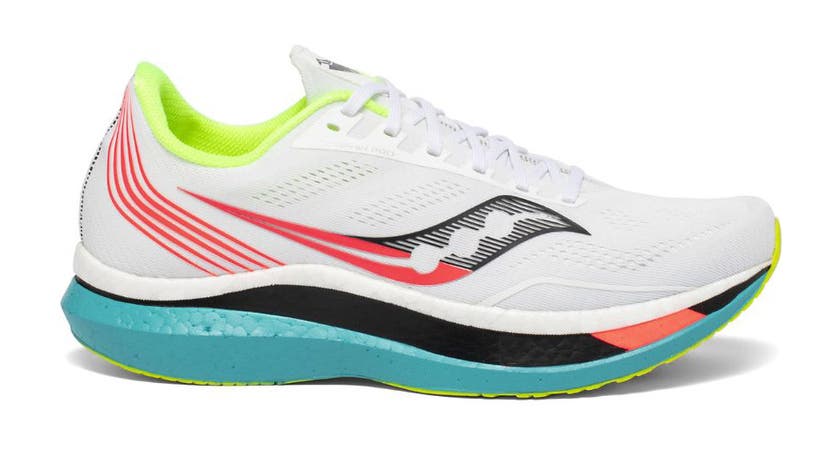
($200, 8mm offset, 7.5 oz), saucony.com
This is Saucony’s top-tier marathon racing shoe. The midsole foam is light, cushy, and extremely responsive thanks to the PWRRUN PB material, and it’s combined with a carbon-fiber plate that isn’t as easy to tame as the Hyperion Elite 2—in terms of finding the footstrike/roll off sweetspot. That said, if you get it to fall into place, that perfect zone is fast, and the rocker plate hits just under the ball of your foot, where it rolls forward as soon as you sense your weight moving forward from the stance phase.
Interested in taking your race day to a lighter level? You may want to race in the Skechers GOrun Speed Elite Hyper ($190, 5.7 oz, 4mm offset).
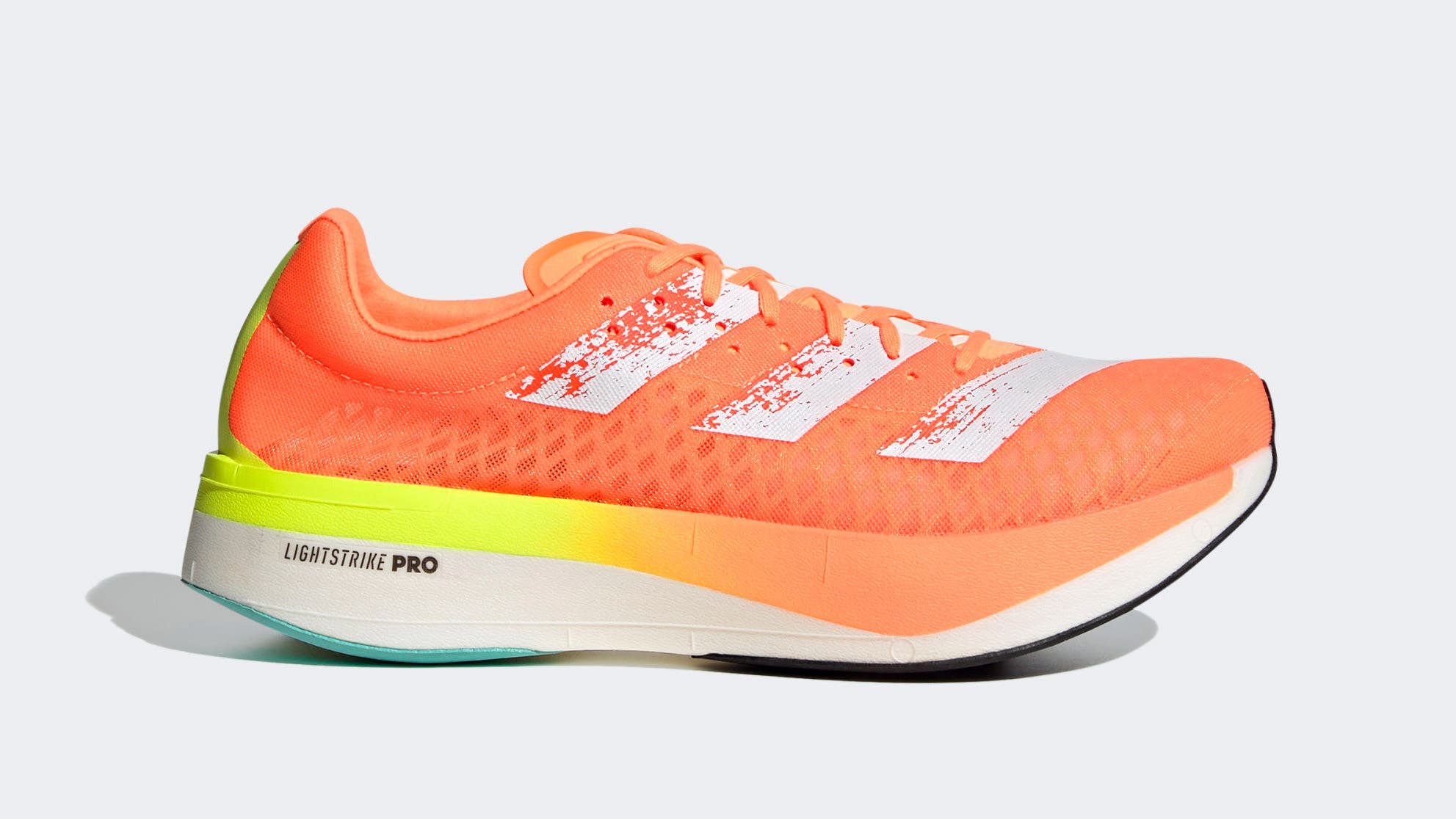
You race in the: Adidas Adizero Adios Pro
($200, 8.5mm offset, 7.9 oz), adidas.com
Although Adidas came super late to the super shoe party and didn’t hit the dance floor with a shoe as light as some of its contemporaries, it still managed to show up with a well-cushioned, bouncy, efficient ride. With the new, thick and bouncy Lightstrike midsole foam, the Adizero Pro is designed with a far-forward rocker that starts just past the ball of the foot and falls away quickly under the toes—appealing to those who run very far forward. As such, it creates an interesting interaction with the stride, seeming to maximize the rebound property of the foam under the ball of the foot before speeding into the toe roll. It’s a truly fast shoe that is impressive in its ability to help you turnover your gait, not just to the forefoot, but specifically to the big toe for optimal efficiency and lift-off power.
Race in those? You should train in: Under Armour’s Flow Velociti Wind
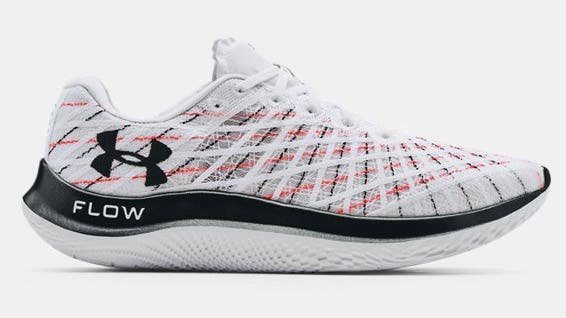
($160, 8mm offset, 8.5oz M, 8.02oz W), underarmour.com
The Velociti Wind is a somewhat firm-yet-flexible shoe that uses a single foam compound and no outsole and, yet, provides a responsive ride with surprisingly noteworthy traction. The energy return and impact absorption of this novel midsole material makes the Velociti Wind a great complementary super shoe trainer.
OR
Race in those? You should train in: New Balance’s FuelCell RC Elite
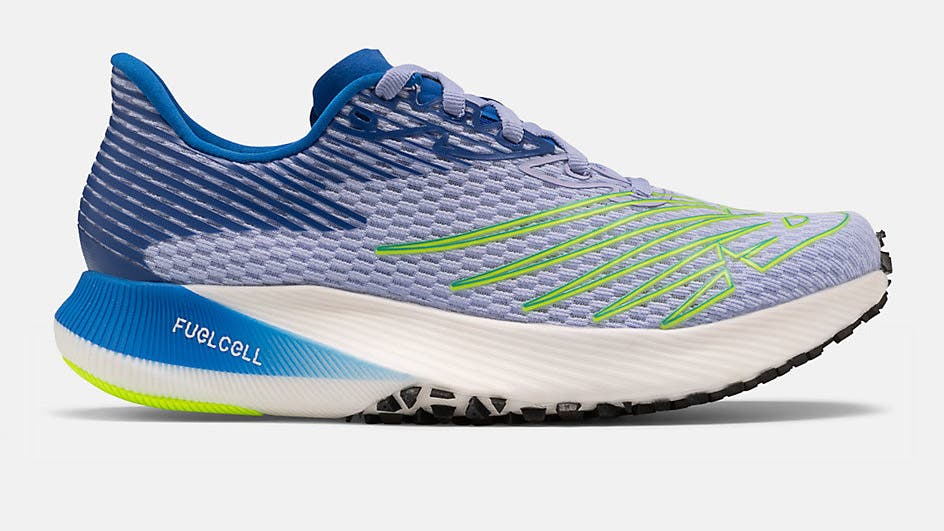
($225 10mm offset, 7.3oz), newbalance.com
If you want a kinder and gentler version of a super shoe the FuelCell RC Elite uses a carbon-fiber plate surrounded by low-density, high-rebound FuelCell midsole compound. That compound is made from a featherweight blend of EVA and TPU for an airy, soft, but energetic ride when you kick into up-tempo running effort.
OR
Race in those? You should train in: On’s Cloudboom
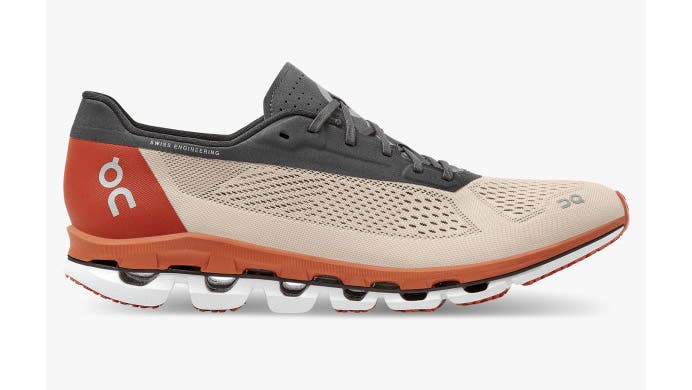
($200, 9mm offset, 7.9 oz), on-running.com
This shoe uses a carbon-fiber-infused “speedboard” to boost propulsion with a high timbre ground response and semi-firm, bouncy foam for variable densities and rebound characteristics based on where on your foot you land.
Interested in taking your race day to a more comfortable level? You may want to race in the Brooks Hyperion Elite 2 ($250, 8mm offset, 7.6 oz).